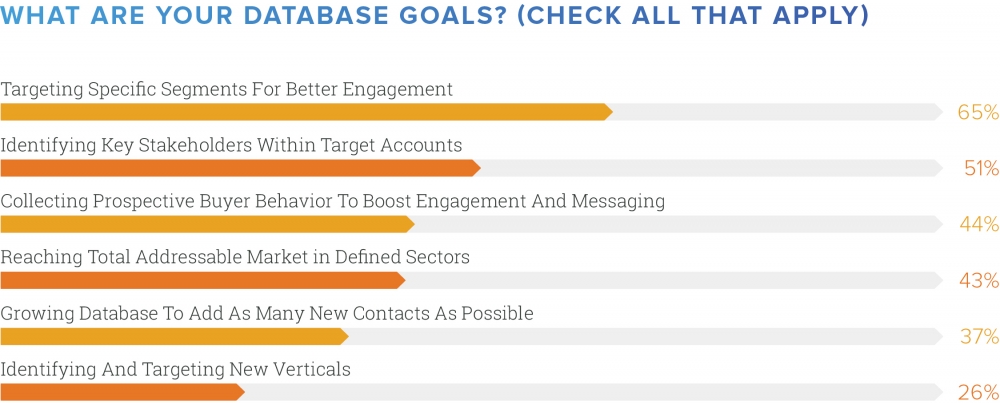3 Tips To Refine Your Database Strategy In 2018 And Beyond
- Written by Brian Anderson
- Published in Blog
You often hear the phrase “Content is King” in the B2B marketplace, but everyone knows that content — and almost every other aspect of engaging with prospective customers — is fueled by the data and insights you have in your database.
We recently conducted our 2nd annual Database Strategies & Contact Acquisition Survey and learned that a desire for more advanced marketing and sales tactics is driving the ongoing need for an accurate, dependable database.
However, there is still room for growth when it comes to B2B data efforts. More than half (51%) of the survey respondents stated that there’s room for significant improvement with their data acquisition strategy, and only 13% said they have a “very solid” strategy in place.
Based on findings from this report, here is a short list of three best practices I can share with B2B practitioners on improving their database initiatives going into 2018:
1) Start Small With Your Existing Database
B2B marketing teams are constantly striving to “do more with less,” meaning make the most of a limited budget. So, it makes sense why 71% of B2B orgs say that not having the time/resources to implement an effective process is one of their top challenges.
2) Go Beyond Email Validation
More than three-quarters (77%) of the B2B companies surveyed state that they handle all their data cleansing and quality assurance in-house, which is understandable with many respondents stating they have limited resources. Respondents state that they validate contact accuracy primarily via email (58%). However, there are more options available to B2B companies.
The key here is to think about other ways your team can validate contact data. This can be continued in-house by going beyond email to look at other data quality options such as social validation, or by considering third-party data validation tools.
3) Begin To Identify Buyer-Centric Metrics
The top database goal for close to two-thirds (65%) of B2B organizations is to target specific segments for better engagement. To do so, progressive companies are looking to identify key buyer-centric metrics that can be used alongside their contact data for better targeting and relevant messaging.
For example, close to two-thirds (64%) of respondents said that one form of deeper intelligence they are currently not collecting — but want to collect — on contacts beyond basic fields is “time frame for a buying decision.” This can easily help marketers understand exactly where in the sales funnel prospects currently reside. Analyze your buyer personas and segments to gain a better understanding of what information would be beneficial to you and your team to enhance engagement.
Close to one out of every three B2B companies plan to allocate more than 10% of their marketing budget to solely their database efforts, noting a clear understanding that they need to invest in accurate customer data for better targeting and relevant messaging. If you’re looking to learn how others in the B2B marketplace are tackling their contact acquisition and database strategies, download this survey report to get the full scoop!

Brian Anderson
An avid B2B journalist with a knack for all things trendy in the POS, mobile and social space.
Related items
-
 Lead2Pipeline Reveals Global Partnership, New VP Of Strategic Accounts
Lead2Pipeline Reveals Global Partnership, New VP Of Strategic Accounts
-
 6 B2B Tech Freemium Offerings Marketers Need To Know
6 B2B Tech Freemium Offerings Marketers Need To Know
-
 3 Questions To Ask For More Efficient Marketing
3 Questions To Ask For More Efficient Marketing
-
 Cordial Partners With Snowflake To Enhance First-Party Data Capabilities
Cordial Partners With Snowflake To Enhance First-Party Data Capabilities
-
 Conversica Introduces New Partner Program To Expand Global Alliance Network
Conversica Introduces New Partner Program To Expand Global Alliance Network



